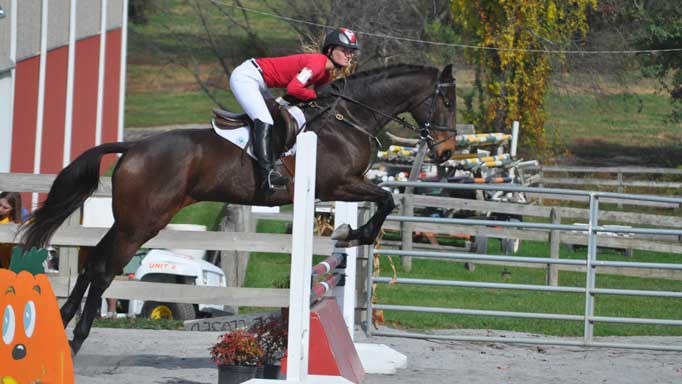My own introduction to the breed came in 2010 when I had moved to Florida to train with the team in preparation for my sport’s ultimate prize, the Rolex Kentucky Three-Day Event. I had a horse but needed money for training so I took some advice and started exercising racehorses at various farms and training centres in Ocala. This is how I met Seahawk (his registered name is Mighty Mariner) when he was a two-year-old in training in Ocala, Florida on my first job as an exercise rider.
A son of Chief Seattle – Miss Atlantis, by Pick Up the Phone, he was one of the nicest young horses I had ever come across. He was going through an awkward growth spurt with huge ears and gangly appearance but he moved with confidence. There was a part of me that hoped he didn’t want to be a racehorse.
As the weeks went by I convinced my boss, trainer Jimmy Miranda, to let me ride Mighty Mariner almost every day. We chatted about the horse’s breeding and about his owner and breeder, Jeff Tucker of New York, who often sends his unsuccessful racing prospects to second career homes. Tucker had bought Mighty Mariner back from a yearling sale for $1,700.
Jimmy had me pretty well convinced that, despite my best efforts to get the big bay gelding into the show ring, Seahawk would learn to run and would be a racehorse one day. After all, that was what he was bred to do.
Mighty Mariner continued to blossom in my eyes, but he didn’t get any faster on the track. Jimmy’s daughter was riding him in morning workouts but his times were not very good. In the spring of 2011, I was set to leave Ocala for Kentucky and on my last day I reminded Jimmy that I would gladly take Mighty Mariner if they ever gave up on him.
Eleven months later, at the age of three and still unraced, Seahawk became my horse. Seahawk went into full eventing training with me in 2011 and by February, 2012 he had mastered dressage movements, learned to jump stadium fences, and tackled ditches, banks and water obstacles in the cross-country field. All of his re-training came fairly easily to him, mostly due to his wonderful natural movement, balance and his playful attitude.
He learned to jump on the end of a long line, first without a rider, and then while mostly loose in the round pen. He was competing within a few weeks of his first mounted jump school. Seahawk has now finished in the top three of several national horse trials and he was named a 2012 division champion by the Jockey Club’s Thoroughbred Incentive Program for his second-place finish at the Waredaca Horse Trials in Maryland, a nationally sanctioned novice-level event.
During the winter of 2013, Seahawk and I are competing in trials at Florida Horse Park and Rocking Horse Stables. This summer we plan to compete in Virginia and Maryland and the goal is to qualify for international competitions such as the World Games or Olympics. I currently have the guidance and support of the Canadian Eventing Team’s coach, Clayton Fredericks.
Seahawk may have been bred to race but one day he just may represent Canada on the world stage.
The Jockey Club Thoroughbred Incentive Program was launched to encourage the retraining of Thoroughbreds into other disciplines upon completion of careers in racing or breeding. T.I.P. offers sponsorship for Thoroughbred-only classes and divisions, high point Thoroughbred awards at open horse shows and competitions, a Thoroughbred of the Year Award and a Young Rider of the Year Award. www.tjctip.com


